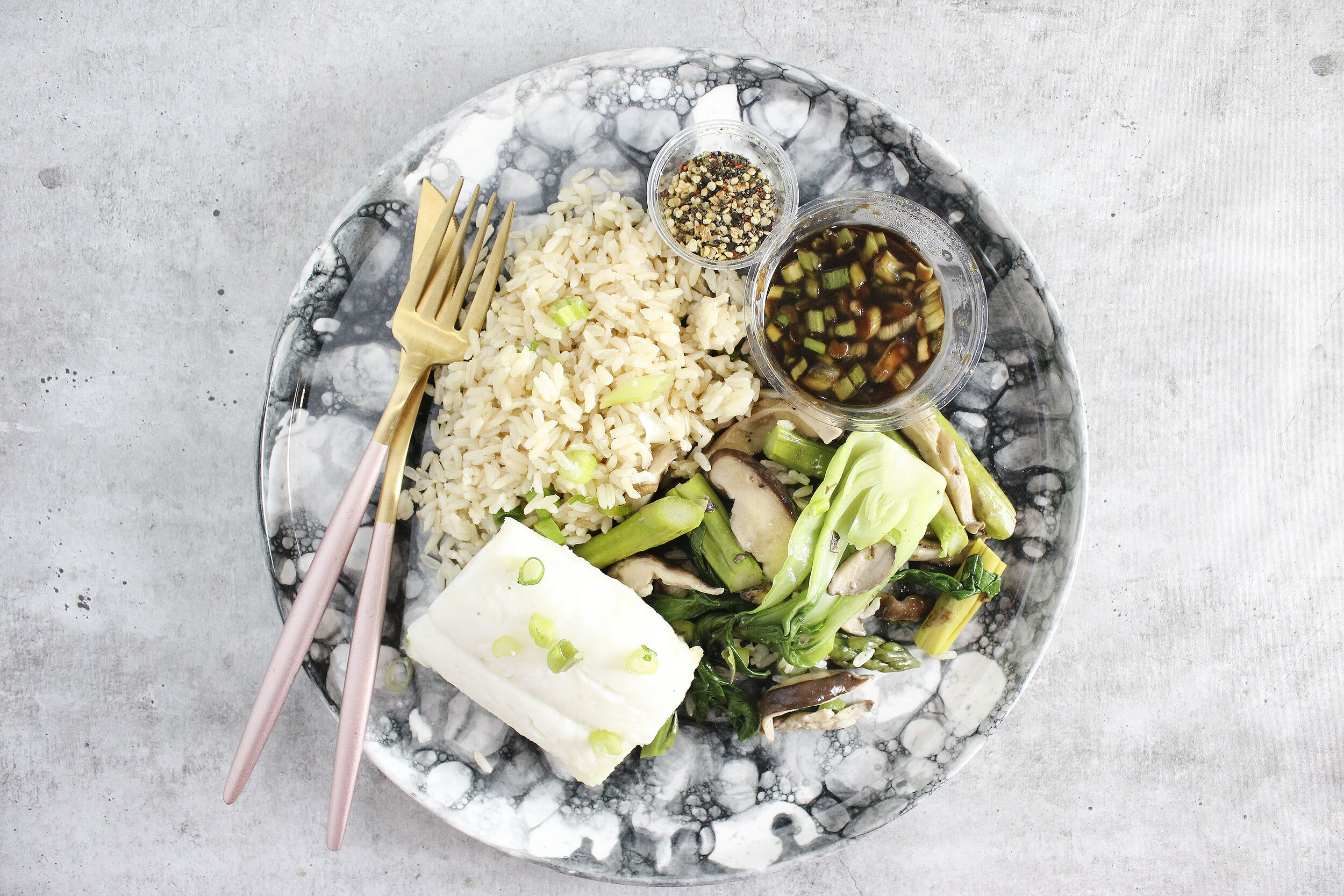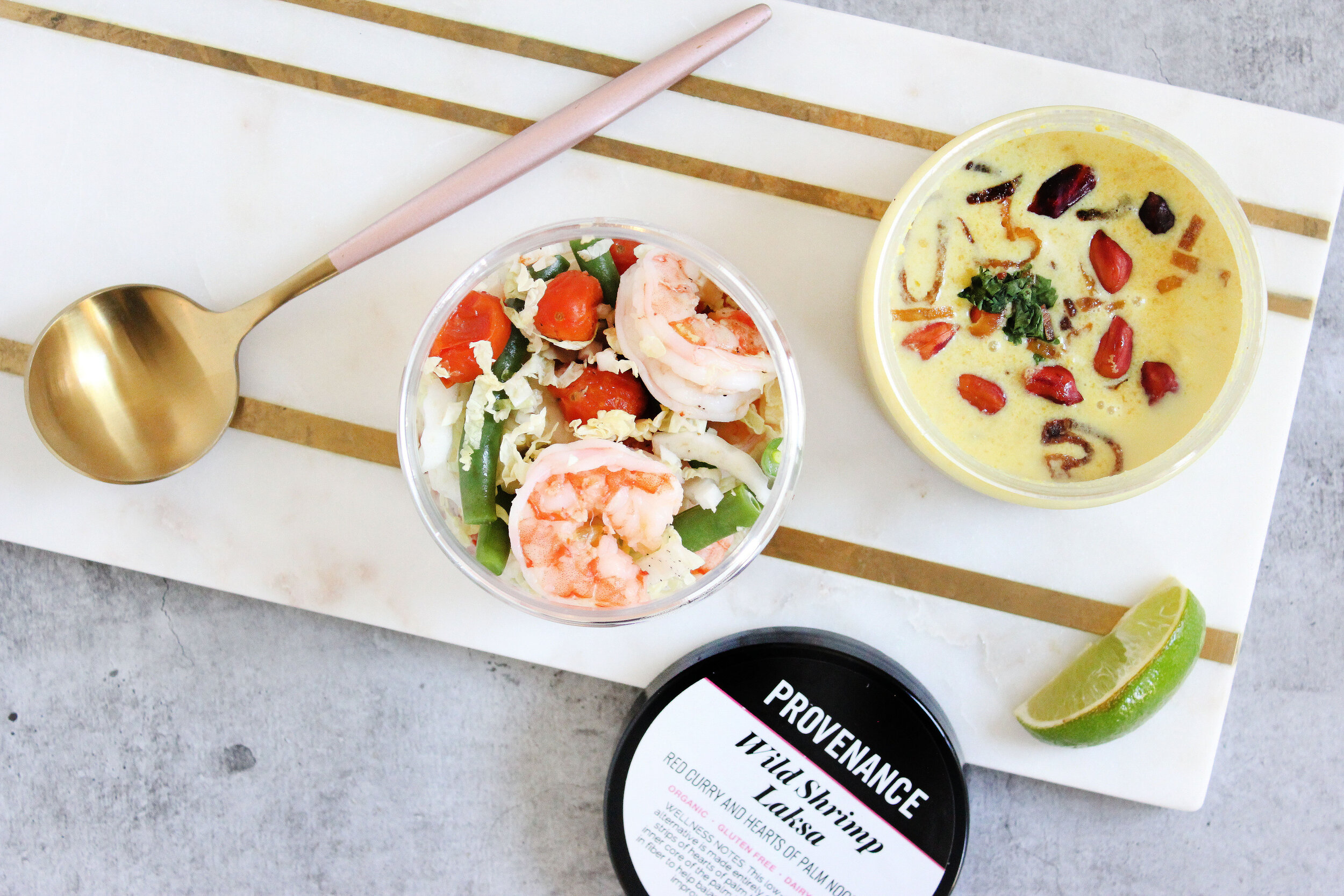We’re obsessed with the provenance of our ingredients. While we know exactly what we’re looking for when it comes to beef and chicken, with seafood, it’s been less clear. Is wild always the most nutritious? How can it be sustainable if overfishing wild populations continues at its current rate? What about by-catch of other species? And micro plastics, mercury levels, and pollution? We know that our clients find it confusing as well, and turn to us for the most nutritious, sustainable, and delicious solution.
Freshwater Steelhead Trout with Lemon Aioli and Pine Nut Relish
THE FUTURE OF FISH AT PROVENANCE
After doing our research, talking with experts, and much taste testing, we believe that aquaculture is one of the bright futures for sustainably sourced fish. This is not the industrial farm-raised fish that, similar to factory farmed meat, is chock full of antibiotics, hormones, and dyes, with overcrowded pens, unnatural living conditions, and stress. These aquaculture farms use self-contained, land-based methods, eliminating the impact of the fish and their waste on ocean ecosystems and wild fish populations. This is truly a win-win, as we work to support the rehabilitation of the ocean while sourcing the cleanest, most nutritious proteins for our clients.
“Aquaculture is one of the bright futures for sustainably sourced fish..... [it] is truly a win-win as we work to support the rehabilitation of the ocean while sourcing the cleanest, most nutritious proteins for clients.”
What is the difference between farmed, wild-caught, and aquacultured?
There are all sorts of terms used to label everything we eat — and seafood is especially no exception. Let’s break down the three most common ways your seafood can be produced, and our recommendations:
WILD-CAUGHT isn’t good enough. Many species are overfished and their populations collapsing. When we focus on only a few kinds of popular fish they are faced with extinction, diminishing biodiversity and impacting entire ecosystems. This also threatens communities that rely on fishing for their livelihoods.
FARMED SEAFOOD is largely run irresponsibly. Although there are some notable exceptions, farmed fish are often fed GMO corn or soy (not a fish’s natural diet), and are exposed to pesticides, antibiotics, and growth hormones. Remember that you are what your food eats, and for the fish to have a healthy ratio of omega-3s to omega-6s, it needs to be eating its natural diet. Unsustainable farmed fish also pollutes the surrounding areas with waste, uneaten food, pesticides, and antibiotics. This changes the composition of the surrounding water and affects wild marine life.
AQUACULTURE offers land-based, self-contained opportunities which eliminate the possibilities of cross-contamination of fish populations and any harm on fresh or saltwater systems. This protects the nutritional value of the seafood you are eating and allows for dwindling marine species and their polluted ecosystems to recover.
Did you know?
About 1/3 of fish in the United States is mislabeled.
Our clients can take comfort knowing that Provenance knows exactly where our seafood is sourced and the methods used to catch it. As our business grows, using sustainable, high-quality ingredients remains at the pinnacle of our operation. Our Clean Eating Programs will always feature exclusively clean, delicious, and ethical foods to spark joy and support your nutrition.
One way we are keeping our promise is by working with organizations like Hudson Valley Fisheries, a zero-waste aquaculture facility located just outside New York City. By using land-based, self-contained methods, the team is producing Freshwater Steelhead Trout, a buttery, flaky fish equally flavorful and nutritious to salmon.
Suppliers like Hudson Valley are also allowing us to diversify the seafood on our plates, opening up more opportunities for different nutrients and allowing certain fish populations to recover.
When we do source wild fish, we love working with suppliers who follow guidelines from the Monterey Bay Aquarium. This institution maintains an excellent website and app called Seafood Watch that rates the sustainability of fish. Seafood is labeled green (best choice), yellow (good alternative) or red (avoid).
We think about food so you don’t have to.
At the end of the day, we think about food so you don’t have to. Provenance offers seafood dishes as part of our Daily Essentials Program so you can feel good about eating for your health and the planet’s. So sit back, relax, and enjoy food that tastes good and does good, too.








